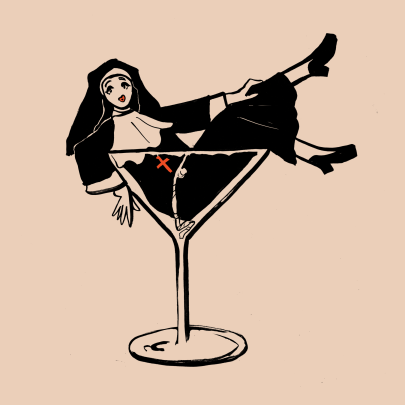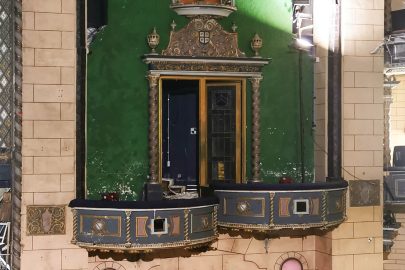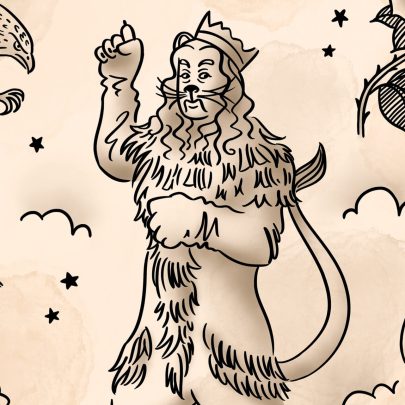Mar 3, 2015 Theatre
Parris Goebel is a global hip-hop dance superstar, but this 23-year-old from South Auckland has other ways to measure her real success.
This story was first published in the January 2015 issue of Metro. Photos by Stephen Langdon.
Two unrelated events involving 22-year-old South Aucklanders took place at the Vodafone Events Centre in Manukau on the night of July 5, 2014. The one that filled the carpark was a fight featuring New Zealand heavyweight boxer Joseph Parker.
Parker had won his first eight professional fights against the standard smorgasbord of the aged and/or obese who generally make up the early career opposition of a highly touted young boxer. On July 5, in front of 2500 people and an undisclosed number of television viewers paying $39.95 to watch on a pay-per-view basis, he was fighting a 39-year-old Canadian schlub, for no good reason other than that our ability to suspend disbelief in regard to boxing is apparently endless.
Read more: Auckland dance crew stars in Justin Bieber video.
Meanwhile, in a theatre down the back of the events centre, about 700 people turned up for Gold Mynd, the latest show from Parris Goebel, multiple world hip-hop dance champion, two-time world female choreographer of the year, choreographer for Cirque du Soleil’s Las Vegas production Michael Jackson ONE, choreographer and dancer for J-Lo, Hollywood actress (Step Up: All In (2014)), choreographer for New Zealand’s first-ever dance film (Born to Dance, due for theatrical release in the second half of 2015), choreographer for two of Asia’s biggest pop stars, featured performer on several American reality television franchises — American Idol, So You Think You Can Dance, America’s Best Dance Crew — and Young New Zealander of the Year 2014.
To be fair, Gold Mynd had sold out on this, the second night of its two-night run, in spite of the fact it didn’t get much publicity and it sounded a bit weird: “There are 13 colours that come to Parris at the age of 13,” the publicity line went. “Black, Silver, Orange, Brown, Purple, Blue, Green, Aqua, Yellow, Pink, Red, White, GOLD. Are you ready to follow her through her dreams?”
At the show, I sat next to a business acquaintance of Brett Goebel, Parris’ father and manager. The only time he had seen a live hip-hop performance before was a previous show of Parris’, an all-out hip-hop extravaganza, that had blown him away with its relentless athletic onslaught. At the end of Gold Mynd, he seemed a little unsure what to say. “A bit different?” I said. “Yeah,” he said.
https://www.youtube.com/watch?v=fJcLiy7m95c
The foundations of Gold Mynd can best be seen in the short film Free Mynd, starring, directed and edited by Parris and filmed by 19-year-old dancer Kiel Tutin, described by Brett Goebel as “her right hand”. Tutin is an emerging star himself and last year choreographed the ludicrously twee music video for “Phony Queen” by Taiwanese pop star Jolin Tsai (just “Jolin” to anyone who speaks Chinese), who has sold more than 23 million records over her 15-year career.
Free Mynd is 28 minutes of experimental cinema. It’s hard to imagine fans of Goebel’s spectacular hip-hop videos feeling the flow of Free Mynd, which contains not too much dance or narrative but quite a lot of rapid cuts and insane camera work.
Now it appears she just wants to do what every true artist wants to do: something that’s never been done before.
“I gave every spare minute to this film,” Goebel writes on her website, where she posted it. “Whatever emotion I felt at the time I surrendered to the project so you can see the ups and downs in my mind. Everything was spontaneous, from the location, to the dancers, to the song choice… If you felt something at the end, that is the essence of my soul. I am not perfect but I am free. This is my ART.”
“P.S. it is loaded on here because i don’t want it to get blocked and i couldn’t care less about the number of views.”
It has a bit more than 100,000 views, which is not a lot for a Parris Goebel video. One clip, featuring some pretty average am-cam footage of one of her dance workshops, has more than 300,000 views, and one of her world-championship performances has over two million.
What I felt at the end of Free Mynd was a bit confused but also intrigued, because Goebel has just turned 23 and has achieved pretty much everything there is to achieve in hip-hop. Now it appears she just wants to do what every true artist wants to do: something that’s never been done before.
Several of the interviews for this story were conducted in the inspirational meeting room of Studio 23, the experiential marketing business belonging to Brett Goebel.
There’s a life-size purple cow in the entranceway. On the wall, in circus font, it says: “KEEP YOUR ARMS & LEGS INSIDE THE ROLLER COASTER CAR AND ENSURE THE ROLLBAR IS PROPERLY ENGAGED”. One sofa is a big pair of red lips. There are display cubes filled with weird-looking figurines.
Shelves are filled with inspirational books, mostly of the genres self-help and business self-help (What Are You Waiting For?, Million Dollar Habits, Life’s Missing Instruction Manual) and inspirational plaques: “We do not stop playing because we grow old, we grow old because we stop playing”.
It was kind of appropriate that her dad’s office should be the launching pad for this story. When Parris was 15, it was he who pulled her out of school after a parent-teacher interview in which he was told she needed to concentrate more and write better essays.
“I was just sitting there,” Brett Goebel says of that interview, “going, in my head, ‘She wants to dance. This isn’t going to make her a better dancer.’
“I literally just stood up and walked out and grabbed her and said, ‘That’s it, you’re finished school,’ and sent her on her way. She was 15. That was it.”
Because this type of dramatic gesture doesn’t much faze him (“Nah, it was alright because I’m an adventurer anyway”) and because it indirectly led to his daughter staying at J-Lo’s house several years later, it’s hard to walk out of a meeting with Brett Goebel in his inspirational meeting room and not send an embarrassingly self-help-flavoured email to your wife:
“Life is full of possibilities. We don’t need to be bogged down. Not that we’re bogged down now, but just that life is here and it’s full of possibilities that we should look for, because they are there and so are we, and why wouldn’t we? The excitement of finding something to aim for and try for.”
Not that Parris was all that excited at her dad’s decision. “I just felt embarrassed, being pulled out of school and not having anything to fall back on. I was really embarrassed and when you’re 15, you have no self-esteem. You have no background. You don’t have money, you don’t have a car, I had nothing.
“My friends were calling, but people were like, ‘So what are you going to go and do?’ I didn’t have anything to do. I didn’t have a job, I wasn’t working for J-Lo. I didn’t have anything to do so I was embarrassed, but I definitely put up a front of, ‘I have got this.’
“I was going to fake it till I make it — make it seem like I’m doing something until I get something, so that I feel confident in myself. That was kind of my way of finding confidence, putting on that front of, ‘I’m going to do it.’ Even if deep down inside I was like, ‘How are you going to do it?’”
Brett only recently found out through a television interview that Parris had felt this way. It didn’t really worry him.
“Dancing was her air,” he says. “If she didn’t have it, she’d die. Even if I’d known she was nervous, I would have just said, ‘That’s because you’re 15. Let me help you.’ And that’s what I did.
“If it hadn’t worked out, at least she’d tried. And then you find something else. Because you are not necessarily going to get it right on your first time.”
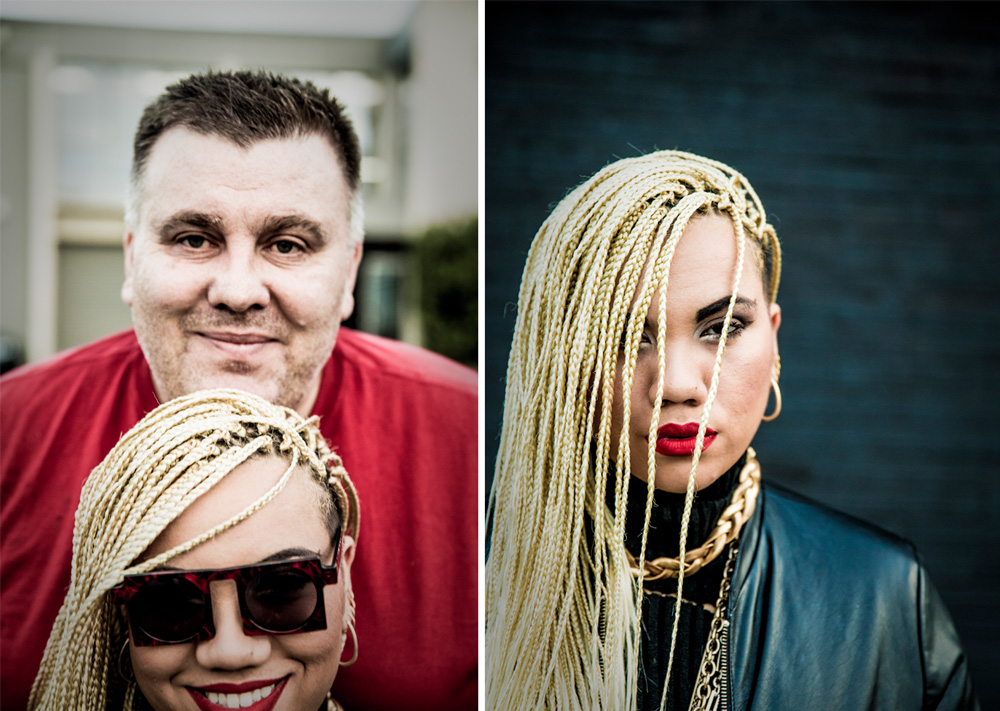
“I think she’s fortunate to have him,” says Howard Schwartz, co-founder of Hip Hop International, organisers of the world hip-hop championships, where Parris has won more medals than any other dancer. “He knows where to direct her, he knows who to hobnob with and play with, so to speak, to help her build her career. And at the same time they have a studio, so it’s not just Parris.”
“He spared no expense, bro,” says Richie Cesan, 29, who has worked for Parris as a teacher, appears in Born to Dance and is a leader of Auckland’s Identity Dance Crew, silver medallists at the last two world hip-hop championships. “Getting her to all the different hip-hop workshop things that were over there [the United States], like Monsters of Hip Hop. Yeah, he was getting her over there whenever she could, to train with the best.
“She had all the talent and the drive and he kind of had the brains to send her places that she needed to get sent when she was young.”
Ask Brett if Parris could have made it without him and he says, “No, probably not. I don’t know. She was sent to my house. She came to Earth and arrived at our house. I always tell her she was dropped off by a spaceship and she believes that, and we’re happy it never came back to pick her up.
“I think as a parent you don’t look at it that way. When she said, ‘I want to dance as my career,’ I had two choices as a parent: I could either tell her, ‘That’s stupid, stay in school,’ or I could say to her, ‘Let’s do it.’ The thing for me more is, for my kids, if I have supported them in whatever they want to achieve, that’s where I get a tick. It’s been a two-way street. All our family’s life is a lot richer because of what she’s achieved in life.”
Parris says she’s very similar to her dad. “He’s very bold and outgoing and he’s always got something to say. He doesn’t take any crap from anyone. I get a lot of my characteristics from my dad and he helped me a lot.
“More so, when I had an idea, he would always help me bring it to life. When I wanted to do something, he would make it happen. Always. That’s how he supported me.”
Richie Cesan: “I think she just believed she was going to do it and there were no ifs, buts or maybes. I think that’s why her dad was just so willing to get her over there and just to do anything he could to give her that slight edge she needed to get her foot in the door. Once she had a foot in the door, it was over.”
By the time Parris was three, Brett and her mother, LeeAnn, had noticed her talent for dance. They enrolled her in jazz, tap and ballet classes, which she didn’t love. She gravitated to hip-hop, giving rise to videos of her dancing in shopping centres and halls, which would later be used as embarrassing fodder on light current affairs television.
She showed some talent, took some classes at around age 14 and within six months she was teaching the classes. She couldn’t find a class that really suited her style, so she more or less taught herself.
After she left school, Brett took her to the US for the Monsters of Hip Hop convention and to a two-day workshop with a professional choreographer. Brett says the choreographer saw something special in her. Parris says she discovered how bad she was. “That was a huge wake-up call, going to America and taking intensives. I was like, ‘Oh, I’m not that good.’”
She came home and started up her crew ReQuest and she practised for a year, then she went back to the States.
“Definitely, a year before that I wasn’t strong at all,” she says. “I think I just worked really hard that year. I just danced every day. I just danced and danced. It sparked up a fire in me and I just danced and performed as much as I could and we entered competitions. And I just worked really hard. You can get really good in a year. You can get good in a month.”
On her return to the US, she was chosen as one of 14 dancers to appear in the Monsters of Hip Hop show, beating out thousands of others who had auditioned.
“That kind of changed my life,” she says. “I got to meet all these people in the industry; they got to watch me dance. That definitely changed my life.”
With Brett’s help, she started her own dance studio, The Palace, and the following year ReQuest won the varsity (12- to 17-year-olds) division of the world hip-hop championships.
The next year, they won the adult division. The year after that, they came second in the adult division, but three other crews from The Palace all won gold medals in their sections: Bubblegum (junior), Sorority (varsity) and The Royal Family (megacrew). Parris choreographed and trained all three.
The same year, ReQuest appeared on season six of America’s Best Dance Crew on MTV.
The following year, 2012, things really took off. J-Lo called and Parris helped choreograph her world tour, and ReQuest danced in J-Lo’s music video “Goin’ In” and on American Idol. Parris won the World of Dance female choreographer of the year award. She appeared on Dancing With the Stars as a featured performer. She choreographed a video and concert for Jolin and was hired by Cirque du Soleil to help choreograph Michael Jackson ONE.
It goes on, predictably, almost boringly, fantastic: more world-championship wins, including an unprecedented three in a row for The Royal Family; a teaching spot on the Monsters of Hip Hop tour; the Hollywood movie; choreographing a video for Taeyang, one of Korea’s biggest pop stars, and doing the same for Born to Dance; running one of the world’s most successful hip-hop dance studios; being flown around the world to teach classes. It could be like that forever. It wouldn’t be a bad life.
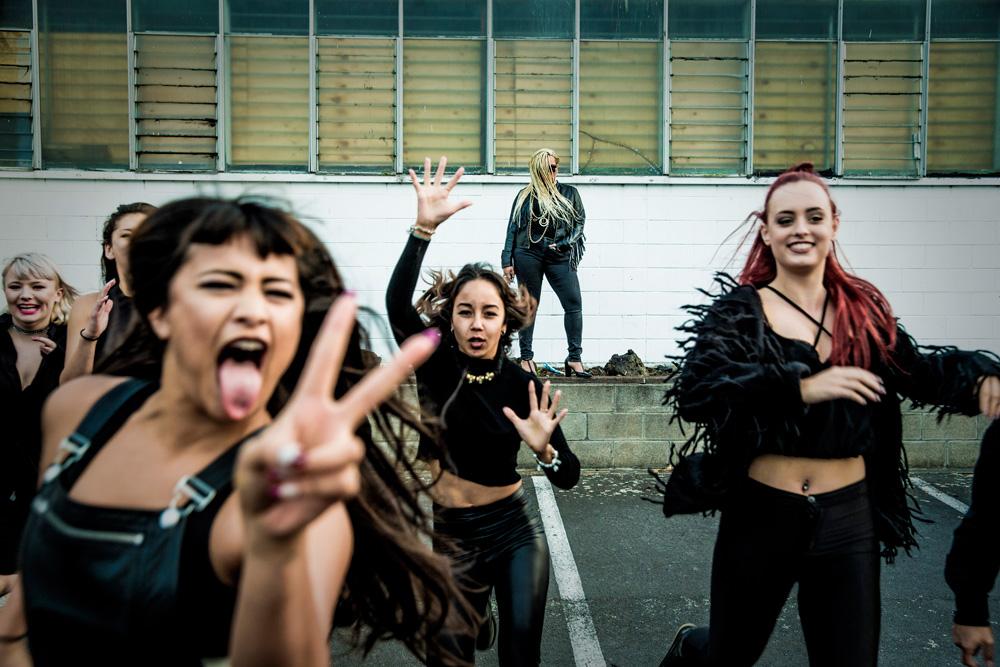
“Her choreographing one of the major artists, singing artists, their tour, I think that will come by default,” Brett says. “When someone rings, Chris Brown or Rihanna or whoever, and says, ‘Can Parris do my tour?’ I’m not going to — it will be amazing — but I’m not going to raise the flag.
“But I think where she can do something — like you look at the show Mamma Mia, which travels the world, or Cats — I think there is the potential for her to create something of that magnitude. And then whatever else is in her head, I don’t know. Who knows what will come out of there?”
Brett’s a masterful promoter. He has done a lot for his daughter and clearly adores her beyond reason (“First of all, that’s his baby,” says Howard Schwartz of Hip Hop International), so you have to be aware of his braggadocio. But you also have to be aware that his braggadocio is part of her career.
He says, keeping things real: “If I had one way to describe her, it would be intricate but simple and just gangsta.”
“My long-term goal is to just build my own empire, really,” Parris says. “I know I can do more. I can do way more. I don’t really know right now but there are a lot of things that I’m passionate about. I love film, I love dance, I love music, I get into DJing, I love fashion. I love everything to do with art, so I think there are so many different alleyways I could go down if I wanted to. It’s up to me to invest time into whatever I want.”
“I want to create things that aren’t around right now,” she told TV One’s NZ Story last year, “create something in the future that doesn’t exist right now.”
In some ways, she’s already doing that. You can see the arc in her videos on YouTube if you watch, in this order: ReBuilt, Keep My Cool and I’d Rather Go Blind.
ReBuilt is ball-grabbing, high-wire hip-hop choreography and brilliant cinematography, conceived and edited by Parris herself. Possibly it’s what Goebel marketing material calls Polyswagg.
The Go2 Talent Agency artist bio page for Parris describes her signature Polyswagg style thus: “Polyswagg combines sassy woman fire with aggressive inner strength. Her style is best described as living and breathing music. Her grooves, heavy hits and milky flow are unique and will leave you inspired.”
Says Richie Cesan, keeping things real: “If I had one way to describe her, it would be intricate but simple and just gangsta.”
Keep My Cool is totally different from ReBuilt: sweet and funny, with a massive cast and a bubblegum ballroom vibe. It’s befuddlingly brilliant. It’s a five-minute hip-hop dance musical. Was that a genre before?
And then there’s I’d Rather Go Blind, in which she stands or maybe sits still, facing the camera, visible only from the waist up, alongside US choreographer Kyle Hanagami, and does almost all of her dancing in her arms and hands. It’s soft and interpretive, possibly even with a milky flow. Apparently, this is the video that got her noticed by J-Lo and it’s the one that makes you realise just how deep and wide her talent runs.
“She’s not a choreographer,” says Kiel Tutin, her right hand, “she’s an artist.”
https://www.youtube.com/watch?v=WrRnXBFXGM8
https://www.youtube.com/watch?v=bDE-1ZdlNWY
https://www.youtube.com/watch?v=npAnlvdjJS4
She’ll do more amazing things. Some of it will be crazy and some of it will probably bomb. She’s an adventurer. She doesn’t care about the number of views. You probably won’t see her do a video like ReBuilt again, as brilliantly nut-busting as it was, because art doesn’t sit still.
Alright, alright, we get it already: she’s an artist and she’s all about the art, and keep an eye out for her art because she’s going to do art, etc.
“Dancing for J-Lo was cool but it wasn’t like that is going to fill my heart forever.”
But when I looked at her across a table groaning with inspirational books in her dad’s meeting room and asked about the highlight of her career so far, it wasn’t anything to do with art. She said: “I don’t know. Maybe just opening a studio has been pretty cool.”
It didn’t sound like much of a highlight, and I thought she was maybe a bit annoyed by the question. The answer felt a bit tossed off. It was her first day off in weeks, she was tired, and she seemed to be growing bored with the interview. But I felt like it was important and I didn’t want to leave it hanging.
“Really?” I said, wondering vaguely what J-Lo’s guest bedroom might look like. “Out of everything you’ve done?”
“Jobs are so temporary,” she said. “Having a studio is like a legacy you can leave forever.”
I asked her what the legacy was.
“I think it’s a huge legacy for dance in New Zealand,” she said, “for hip-hop in New Zealand. We don’t have much. We don’t have many studios. It’s a home that kids can come to, they can learn and they can see a brighter future. It’s a huge legacy. Before us there wasn’t much and now kids are coming to us to win gold medals and to try to dance for Beyoncé and stuff.
“I think people need to understand that things aren’t always as magical as they seem to be, so all these jobs are cool and stuff, but it doesn’t fulfil you as much as helping kids and stuff. That fills your heart. Like dancing for J-Lo was cool but it wasn’t like that is going to fill my heart forever. It was just a cool experience but it was so different. One is temporary, one’s forever.”
“I think she has given people the belief that it’s something more than just a hobby,” says Richie Cesan. “There’s no shortage of people that like dance and want to dance but what there is is a shortage of people that believe they can actually make something out of it. I think what she’s done is to give a heck of a lot of people the belief that if they work as hard as she does then they can get to where she is, which is not something that was around five to 10 years ago.”
Marian Pearce moved her family to Auckland from Whangarei seven years ago so her girls Kaea and Ruthy, then 10 and 7, could train with Parris at The Palace.
“I’m very career minded,” Pearce says. “I come from a family of career-minded people. Whenever I get into something, I don’t do it just for the fun of it. I just want some outcomes. So we weren’t coming to Auckland for the heck of it. We sacrificed a lot, left our friends and families behind. We had no one in Auckland. Living in Auckland compared to Whangarei, it was triple the price for everything. We thought this could be something pretty amazing, so we just bit the bullet and did it.
“My oldest daughter was very shy and was never really picked for anything. Parris saw something in her and no one had ever seen that before, other than us. She was just one of those kids that could blend in anywhere, and for once in her life she was standing out. And the youngest has followed suit.
“I wanted them to have more of Parris. These trips she would make up north were every few months. I wanted it to be every week, because I saw the benefit in such a short time.”
Kaea is now 17 and a member of ReQuest. She appears prominently in Parris’ international shows, has won gold at the world championships and has just finished working on Born to Dance. She wants to dance professionally in the United States and it’s a goal that’s within her grasp. Parris describes her as an “amazing, phenomenal dancer”.
“She definitely wasn’t the strongest in the group that I was teaching,” Parris says of her as a 10-year-old. “She didn’t have, like, crazy potential about her — her younger sister did — but, I don’t know, I liked her spirit, I saw something in her spirit. She was sweet and I feel like she had something to offer. I didn’t know what it was but I like to feel things like that from people — curiosity grows inside me and I want to see what it is they have inside of them.”
About Ruthy, the younger girl, Parris says, “She’s really cool. She’s awesome. She’s really, really talented at a young age. I think she’s amazing, I think she can make it. She can make it if she puts the hard work in. Right now she’s amazing. She’s got heaps of potential. So whatever happens is kind of up to her.”
Marian Pearce: “If someone were to ask me, ‘What are the benefits you see for your girls?’, I honestly couldn’t explain it. People say, ‘Going to America! Well that’s all paid off!’ But it wasn’t that trip to America, it was seeing them be passionate about something. As an educator myself, I don’t even see that in my university graduates.
“These are 14- and 17-year-old children who know what they want and know what it takes to get there. And they’re prepared to work their butts off to do that.”
Let’s say they do get there — in their late teens or early 20s, as dancers tend to do — and they’re on tour with Beyoncé or Rihanna or an ageing J-Lo, or maybe even Parris. That sounds pretty great. Who wouldn’t want that? But that stuff is temporary. Parris’ real gift will be to make them ask, “What’s forever?”

